Risk analysis is an essential process in project management that involves identifying, assessing, and prioritizing potential risks to project success. It allows project managers to understand and prepare for uncertainties, enabling them to make informed decisions and develop effective risk mitigation strategies. By integrating risk analysis in project management practices, organizations can increase the likelihood of project success, optimize resource allocation, and minimize negative impacts.
In this article
Part 1. What is Risk Analysis in Project Management?
Risk analysis in project management refers to the systematic identification, evaluation, and prioritization of potential risks that could impact the successful completion of a project. It involves assessing the likelihood of risks occurring, estimating their potential impact, and determining the appropriate response strategies.
Part 2. Integration of Risk Analysis in Project Management
Integrating risk analysis into project management processes whether it’s for qualitative risk analysis in project management, or otherwise, is essential for ensuring project success. It is typically carried out in several stages.
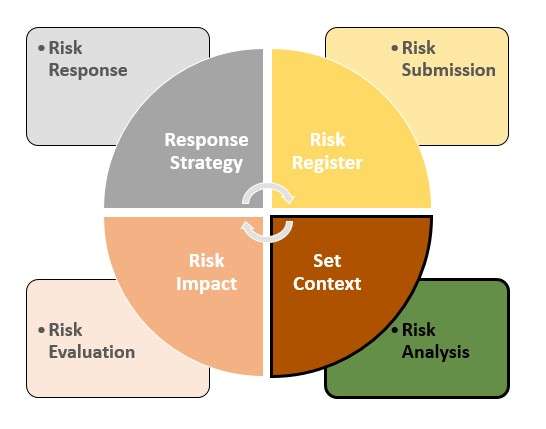
1.Risk Identification:Identify all potential risks to project objectives through stakeholder consultations, data analysis, and expert input.
2. Risk Assessment:Evaluate the impact and likelihood of identified risks to prioritize and allocate resources and response strategies.
3. Risk Response Planning:Develop effective response plans, including contingency plans, mitigation strategies, risk transfer approaches, or acceptance measures.
4. Risk Monitoring and Control:Establish continuous monitoring and control mechanisms to track risks, assess response plan effectiveness, and make necessary adjustments.
Part 3. Benefits of Risk Analysis in Project Management
The benefits of risk analysis in project management are numerous. Thus, analyzing risks in project management is crucial for all organizations. It ultimately leads to the success of organizations.
1. Proactive Decision-Making: Risk analysis enables proactive decision-making by anticipating and planning for potential risks rather than reacting to them.
2. Improved Resource Allocation: Project managers can optimize resource allocation based on their potential impact by identifying and assessing risks.
3. Enhanced Project Performance: Effective risk analysis minimizes the negative impact of risks, ensuring projects are completed on time, within budget, and meeting stakeholders' expectations.
4. Stakeholder Confidence: Thorough risk analysis fosters trust and confidence in the project's success among stakeholders.
Part4. Challenges and Best Practices in Risk Analysis
Risk analysis in project management has some key components. All of these components are equally important. If an organization wants to progress, these components must be implemented.
1. Risk Identification: Comprehensive identification of risks.
2. Risk Assessment: Evaluation of risks based on impact and likelihood.
3. Risk Response Planning: Developing strategies to address identified risks.
4. Risk Monitoring and Control: Continuous monitoring and adjustments as required.
Project management risk analysis has some challenges, regardless of whether it’s quantitative risk analysis in project management or qualitative. Organizations of all sizes must take the essential measures to overcome these challenges. There are also some best practices for risk analysis in project management, and following them is extremely important for organizations.
Challenges:
1. Insufficient Data:Limited historical data may hinder accurate risk assessment.
2. Subjectivity:Risk assessment can be influenced by individual biases and assumptions.
Best Practices:
1. Involvement of Stakeholders:Engaging stakeholders in risk analysis enhances the identification and understanding of risks.
2. Documentation:Maintaining comprehensive records of risk analysis activities aid in continuous improvement and knowledge transfer.
Part 5. Popular Tools to Create a Risk Analysis Chart
Wondershare EdrawMax is the ultimate solution for creating risk analysis charts in project management, whether you want to make a chart for qualitative risk analysis in project management or quantitative. Its powerful features and intuitive interface make identifying and mitigating potential risks easy. You can effectively communicate and manage risks with a wide range of customizable templates. You can create a risk analysis chart for project management using the tool by following these easy steps:
Step 1: To start your chart creation journey, first, you have to log in. Access your Wondershare EdrawMax account by logging in using your email address and password.
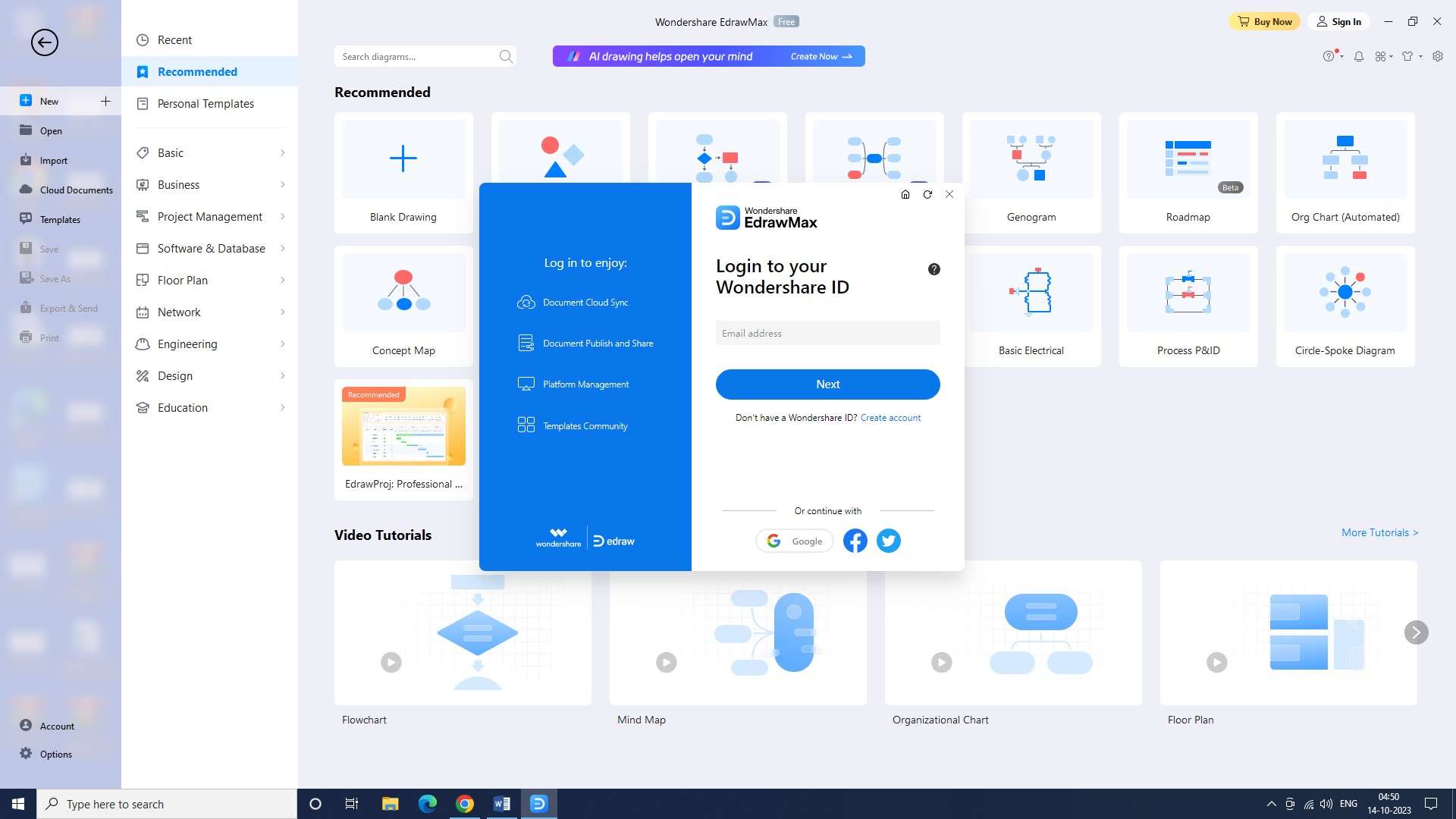
Step 2: After you have logged in, you have to open a new document. Open a new document in the tool by using the keyboard shortcut Ctrl+N or by selecting "New" from the file menu.
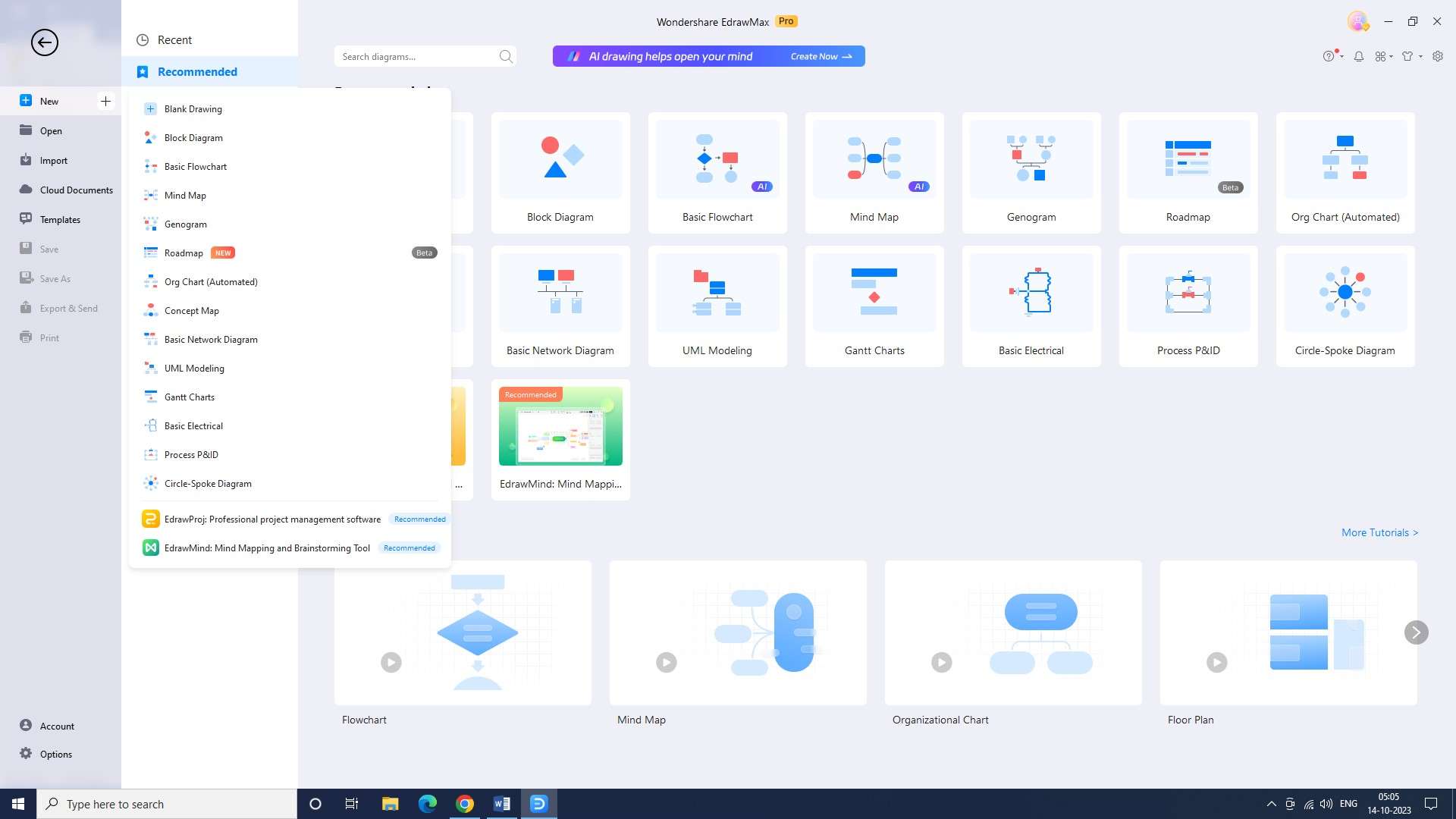
Step 3: Navigate to the template library within the tool. Search for the "Project Management Risk Analysis Chart" template and select it to open in the editor.
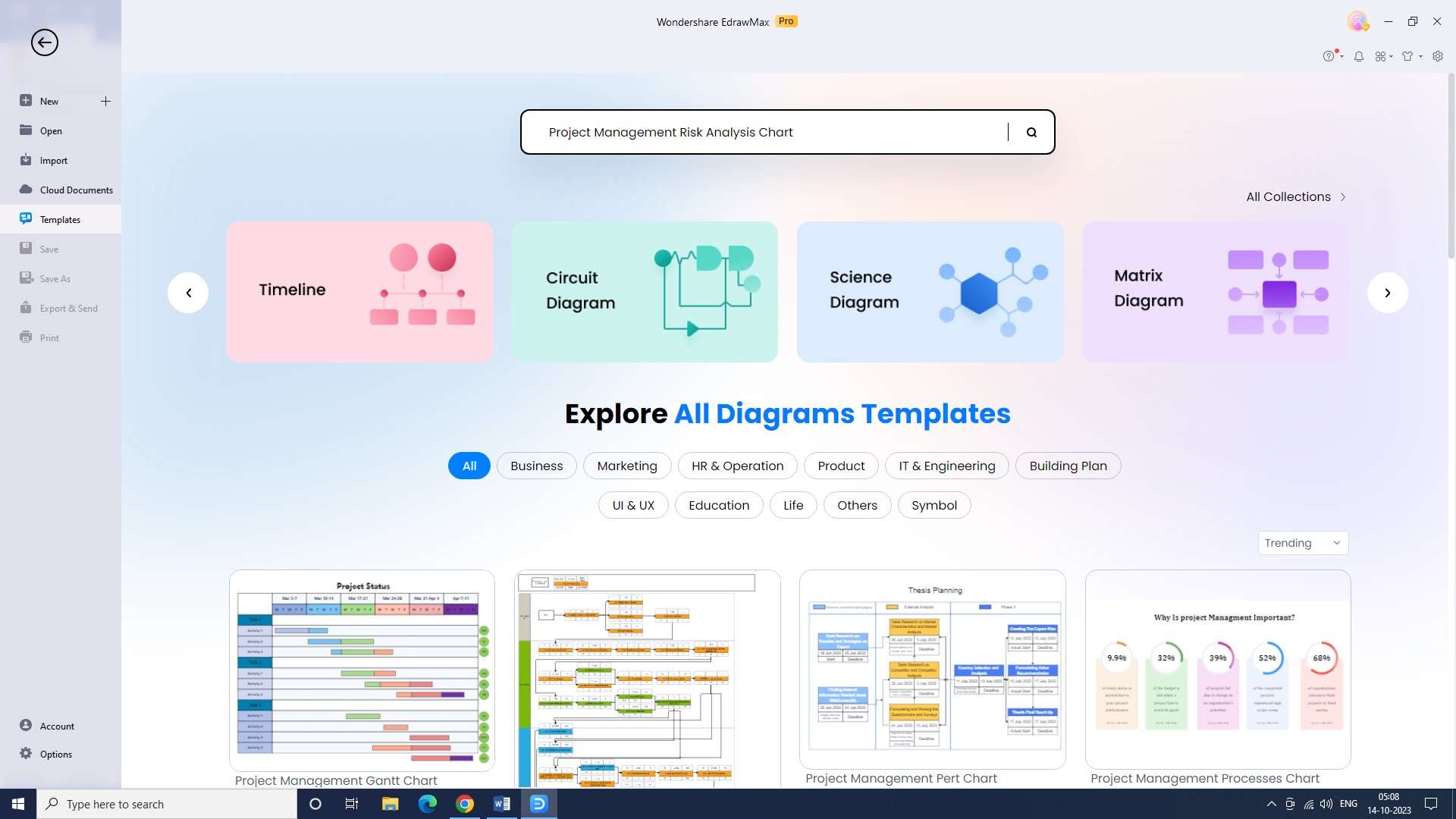
Step 4: It is also crucial to represent all the risk factors in the risk analysis in project management. Utilize the available shapes, icons, and text tools to visually represent each risk factor effectively.
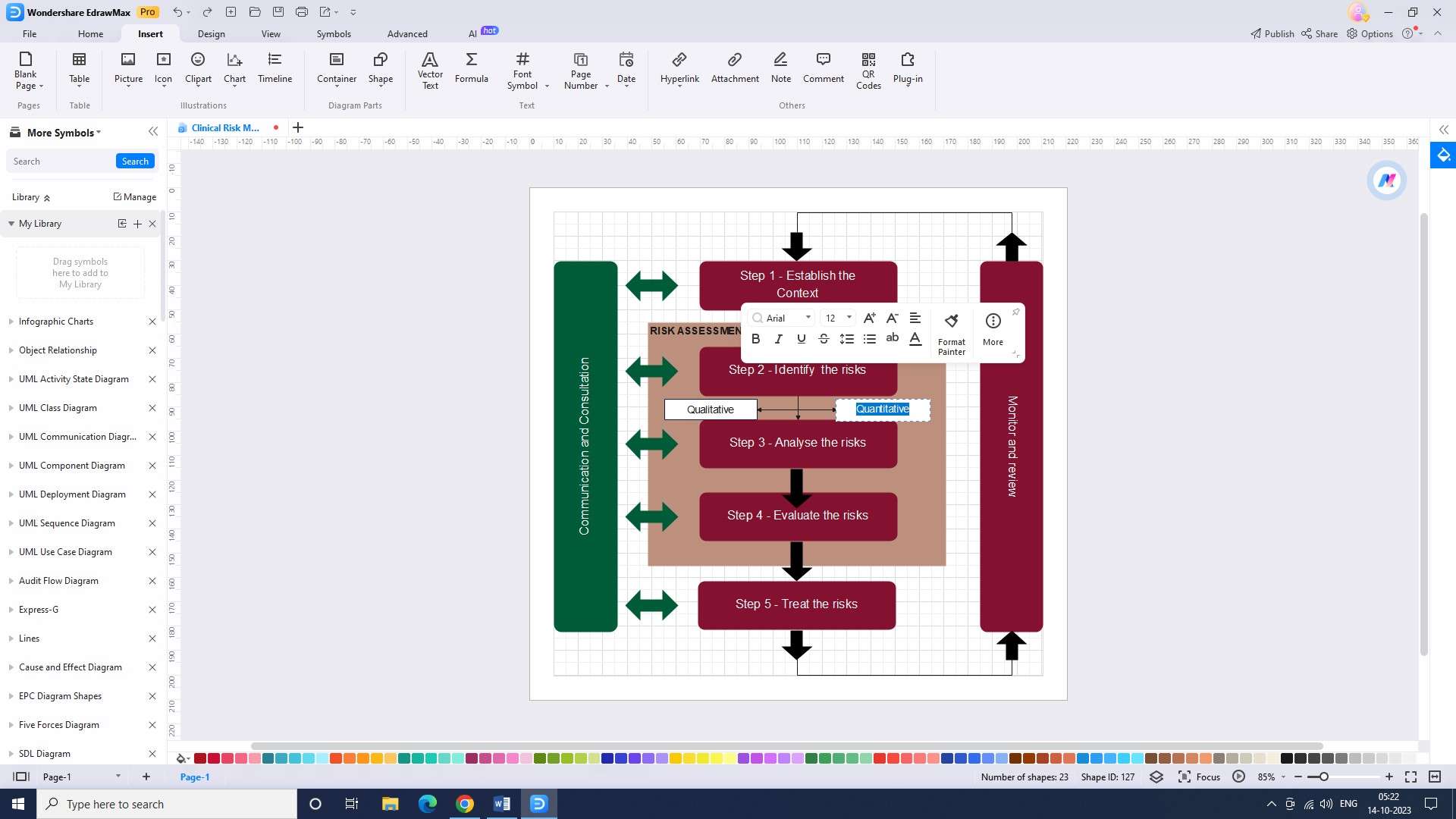
Step 5: Group related risks together or use color coding to indicate different risk categories. This helps in better organization.

Step 6: Include a legend or key to explain the symbols and colors used in the chart. Doing this makes the chart easy to comprehend.
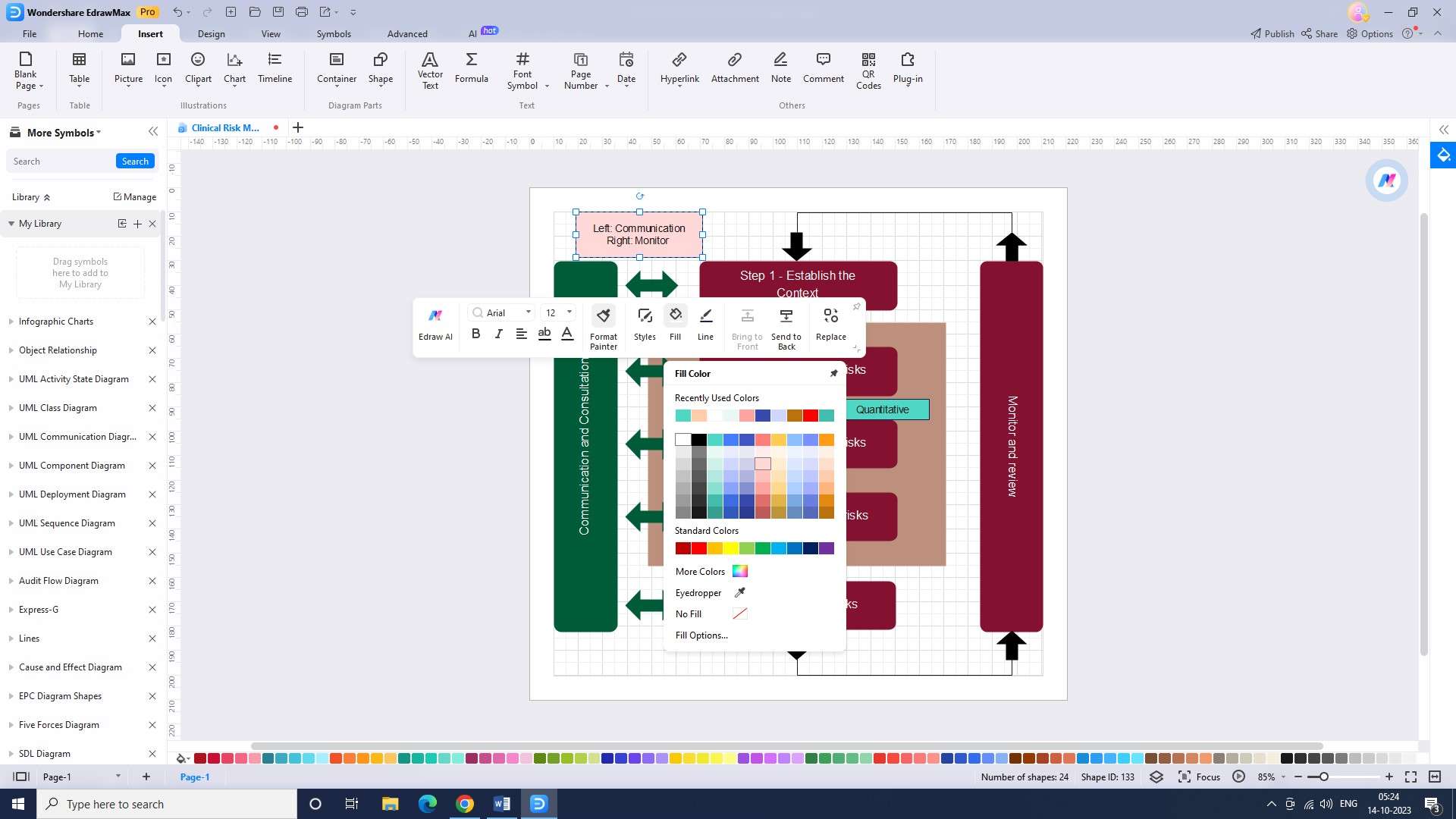
Step 7: Save your chart by selecting “File” and then “Save” from the file menu. Alternatively, you can also use the shortcut key Ctrl+S.
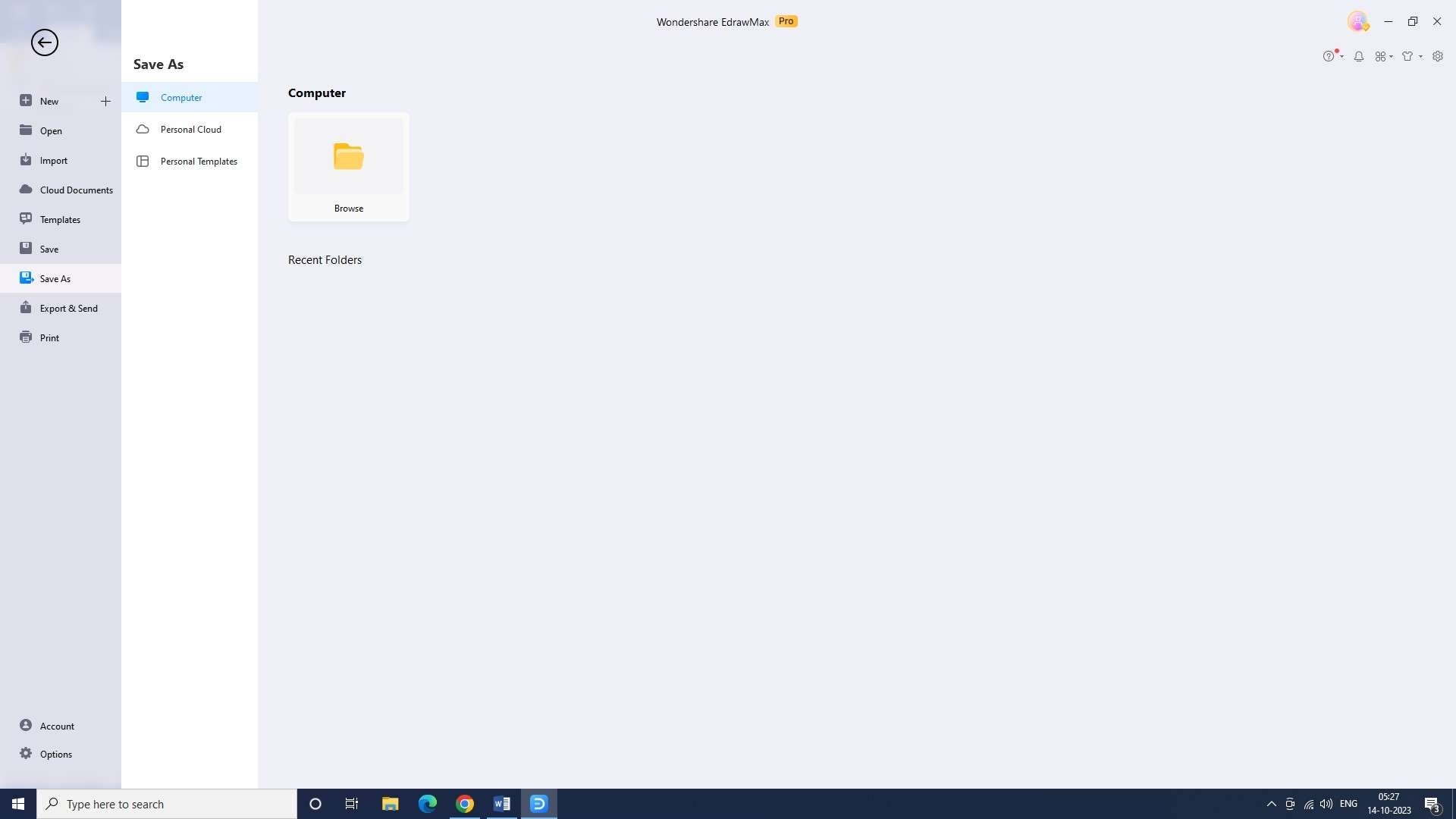
Step 8: Export the chart to your preferred format, such as PDF or Excel, by clicking on the "Export" button and selecting the appropriate option.

Conclusion
Incorporating risk analysis into project management, be it quantitative risk analysis in project management or qualitative, enables proactive decision-making, improved resource allocation, enhanced project performance, and stakeholder confidence. The key components of risk analysis include everything from comprehensive risk identification to continuous monitoring and control.




